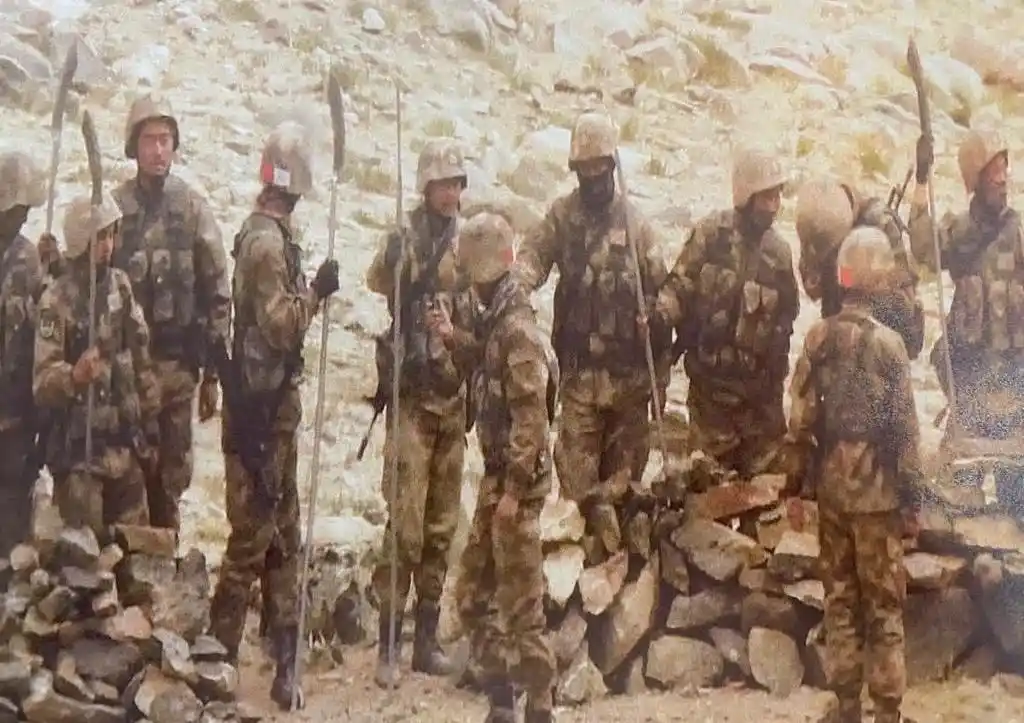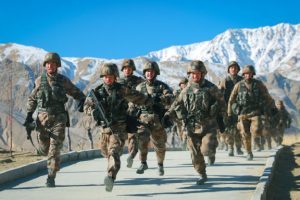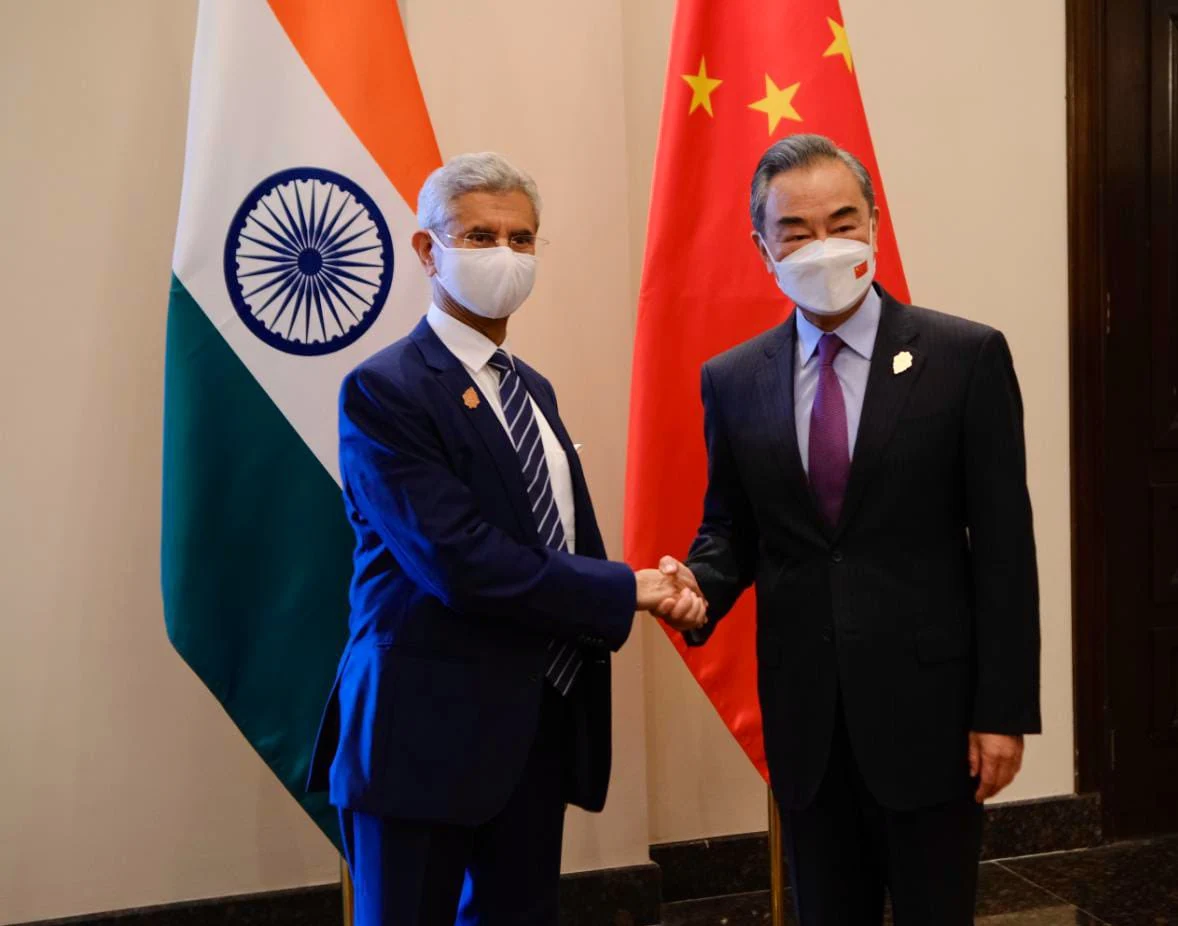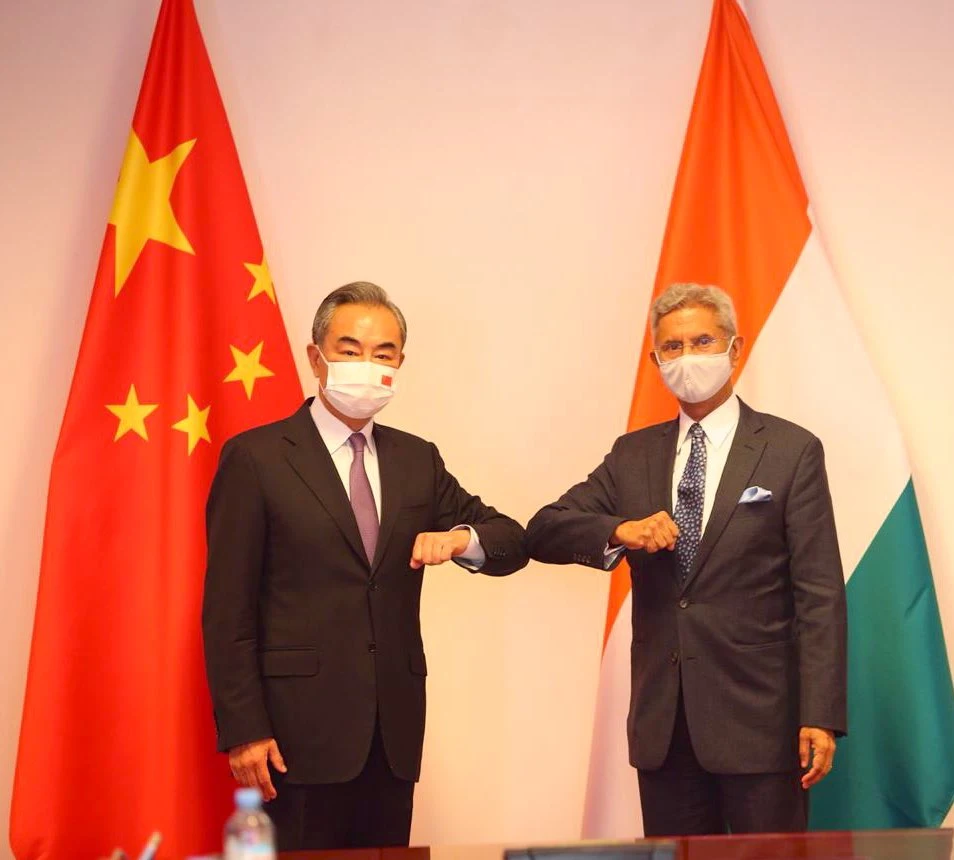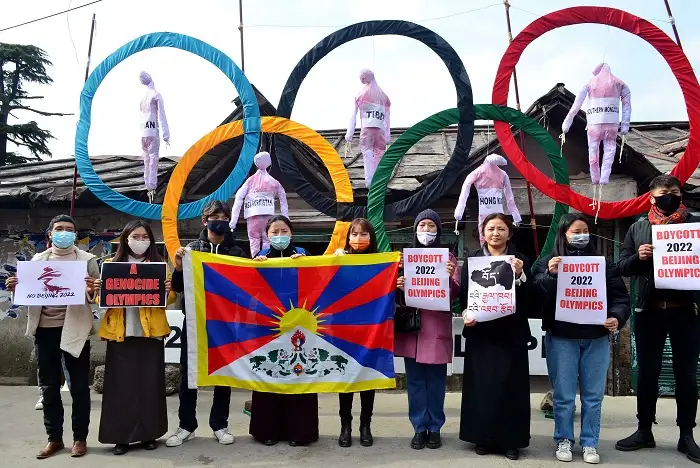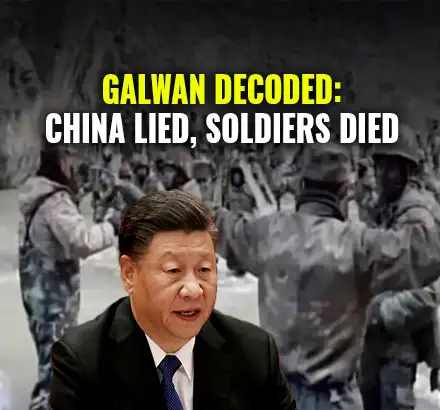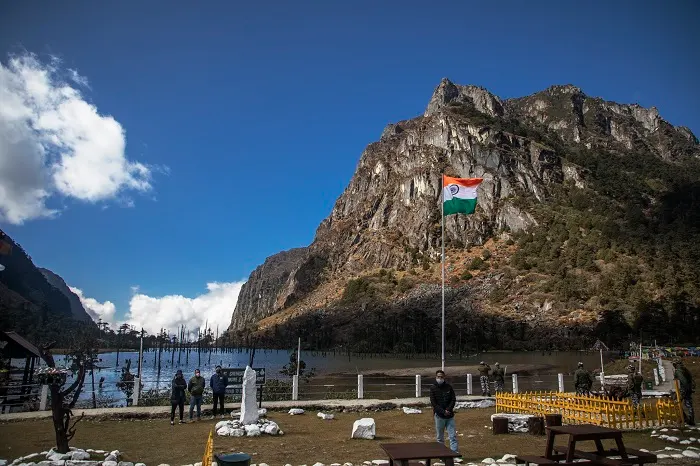In a shocking revelation about China hiding its losses in the Galwan Valley clash with India in June 2020, new research has shown that the People's Liberation Army (PLA) lost at least nine times more soldiers than its official count of four.
At least 38 PLA troops drowned while crossing a fast-flowing, sub-zero river in darkness, according to an article in the Australian newspaper 'The Klaxon' which cited a report prepared by a group of social media researchers after a year-long investigation. Of the four soldiers China has confirmed died, only one – Junior Sergeant Wang Zhuoran – is reported as having drowned, the investigative newspaper said.
The report cited "several Weibo users" and said, "at least 38 PLA troops along with Wang were washed away and drowned that night…of which only Wang was declared among the four officially dead soldiers".

The report cited a year-long investigation involving discussions with mainland Chinese bloggers, information obtained from mainland-based Chinese citizens and media reports that have since been deleted by Chinese authorities.
India had said that 20 of its soldiers had died in the Galwan Valley clash in June 2020 which was fought in hand-to-hand combat in sub-zero temperatures in the near pitch-black night of June 15 and June 16, 2020.
The Galwan Valley clash was the deadliest confrontation between India and China in over four decades. China's state media has almost entirely failed to cover the skirmish or its aftermath.
The clash took place along the Line of Actual Control (LAC) in eastern Ladkah following a standoff over actions of the Chinese Army.
China repeatedly refused to disclose its total casualties but in February last year it announced posthumous medals to four of its soldiers who died in the Galwan clash.
The Klaxon said that claims of substantial Chinese casualties of the high-altitude Galwan Valley clash are not new. However, evidence provided by a group of social media researchers which the newspaper has independently built on, appears to support assertions that China's casualties extended well beyond the four soldiers named by Beijing.
The evidence provided by the group of social media users also shows extreme lengths Beijing has gone to in order to silence discussion about the battle, especially discussion about the true number of Chinese casualties, according to The Klaxon.
In around April 2020 Chinese forces began further ramping up activities in the Galwan Valley, setting up infrastructures such as tents, dugouts and machinery.
From early May 2020 skirmishes broke out between Indian and Chinese troops, not just at Galwan Valley but at various points along the China-India border, including near Pangong Lake in Ladakh and Tibet.
The report titled "Galwan Decoded" prepared by a group of social media researchers has shed significant light on the saga. It cites a year-long investigation involving discussions with mainland Chinese bloggers, information obtained from mainland-based Chinese citizens and media reports that have since been deleted by Chinese authorities.
"A lot of facts about what really happened, what led to the skirmish, have been hidden by Beijing. What was told by (China) to the world were mostly fabricated stories. Many blogs and pages have been culled by (Chinese authorities) but digital archives of mainland China reveal a different story," the report states, according to the newspaper.
At the heart of the disclosure is that many Chinese soldiers were killed while attempting to cross back over the fast-flowing Galwan River in the early stages of the June 15-16 battle.
The newspaper said of the four soldiers China has confirmed died, only one – Junior Sergeant Wang Zhuoran – is reported as having drowned and other three, PLA Battalion Commander Major Chen Hongjun, Private Chen Xiangrong and Junior Sergeant Xiao Siyuan, were killed by Indian forces.
The research document includes a report since deleted from the internet.
"In June 2020, during the border defence struggle, Wang Zhuorang's company was ordered to perform a support mission," the document states, according to The Klaxon.
Crossing the river, "comrades in arms kept slipping and being rushed downstream. Wang Zhuran pushed four comrades ashore one after another but his legs became stuck by stones at the bottom of the river. His physical strength was too weak and he drowned," the document states.
The Klaxon also obtained footage of the battle, released by Chinese media in August last year, that appears to strongly support the claims.
The researchers say the deadly June 15 battle was sparked over a temporary bridge, which Indian soldiers had erected across a stream of the Galwan River three weeks earlier, on May 22. Indian and Chinese military officials had agreed to a "buffer zone" along the border in attempt to "de-escalate the crisis" amid rising tensions.
India had said that China had been building "illegal infrastructure" including erecting tents and creating dugouts and had moved machinery into the area.
"According to a Weibo user alias name Qiang who claims to have served in the area, the PLA was creating infrastructure in this buffer zone, violating the mutual agreement and had been trying to expand its patrolling limits within the buffer zone since April 2020," the researchers state.
The report states that on May 22 Indian troops, led by Colonel Santosh, Commander of the 16th Regiment of Bihar, "created a temporary walk-over bridge" over a stream of the Galwan River to allow troops to monitor Chinese activities.
"Though PLA was constructing its own infrastructure in the buffer zone, the construction of a temporary bridge by Indian troops aroused strong opposition by the Chinese," report states, according to the newspaper.
Videos of confrontation between Chinese and Indian troops – ostensibly of the June 15-16 clash – have been broadcast by Chinese media. The report notes that one video, of a stand-off between troops, is clearly shot "in broad daylight", while the other video is of a clash at night.
The report states: "On June 6, 80 PLA soldiers came to dismantle the bridge and nearly 100 troops came to defend it". "That is when the video of the standoff was probably shot, which Chinese media claimed to be shot on 15 June, 2020".
It states that during the June 6 standoff, officers from both sides "agreed to withdraw all personnel who crossed the buffer zone line" and to "dismantle all the facilities that crossed the line". However, the report says China failed to adhere to the agreement.
"PLA did not adhere to its promise…and instead of dismantling its own infrastructure as agreed upon, secretly dismantled the river crossing bridge constructed by the Indian army," it says.
Three days later, on June 15, Col Santosh Babu and his troops returned. The Chinese forces were led by Colonel Qi Fabao.
"On 15th June 2020, Col. Santosh Babu along with his troops went to the disputed area in the Galwan Valley at night in an attempt to remove the Chinese encroachment where Col. Qi Fabao was present along with nearly 150 soldiers," the report states, according to The Klaxon.
It says that Fabao "ordered his troops to form a battle formation, instead of discussing the issue on the lines of mutual consent made on June 6, 2021".
"The moment Col. Fabao attacked he was immediately besieged by the Indian army troops. To rescue him, PLA battalion commander Chen Hongjun and soldier Chen Xiangrong entered the encirclement of Indian army and started (a) physical scuffle with Indian troops using steel pipes, sticks and stones to provide cover for (their) commander to escape."
It says Colonel Qi Fabao was "hit in the head by an Indian army solider" and "rushed back with serious injuries". Hongjun and Xiangrong were "immediately silenced by the Indian army," it added.
Another Chinese soldier, Xiao Siyuan, "of the Motor Infantry Battalion of the 363rd Regiment, Frontier Defence, Xinjiang Military Region" had been "recording the event".
"In the ongoing scuffle, he left the camera and attacked but was severely wounded by an Indian soldier and later succumbed to his injuries," the report states.
It states that "after Col. Fabao left the arena", and watching the "bodies of Major Chen Hongrun, Junior Sargeant Xiao Siyan and Private Chen Xianrong," that "PLA soldiers panicked into retreat".
"Wang Zhuoran, a 1996-born native of Luohe City, Yancheng County, Henan, came forward along with his companion Ma Ming to help his scattered retreating comrades out of danger by guiding (their) way to retreat back. The PLA soldiers didn't even have time to wear water pants. They decided to cross the icy water of the river in pitch dark under the guidance of Wang. The river rose suddenly and injured comrades kept slipping and (being) washed downstream," the report states.
"Information gathered by a blogger from people who attended Wang's funeral at Luohe Martyrs Cemetary, Henan, reveals that Junior Sergeant Wang Zhuoran pushed four of his comrades across the river successfully but his legs became stuck by stones at the bottom of the river. At least 38 PLA troops along with Wang were washed away and drowned that night…of which only Wang was declared among the four officially dead soldiers. After the incident, the bodies of the soldiers were first taken to Shiquanhe Martyr Cemetery, followed by local ceremonies at the local towns of the killed soldiers," the report notes, according to the newspaper.
The Klaxon cites the report as saying that a division of Xinjiang Miltary Region "organized officers and soldiers to go to the Shiquane Martyr Cemetary to lay flowers to the revolutionary martyrs, organize party members to take an oath and sweep the tombs for heroes". After the initial deadly clash it appears both sides called for reinforcements.
It appears to be during the subsequent fighting that many of the 20 Indian soldiers were either killed, or wounded and later died of their injuries or hypothermia, the newspaper said, adding that numerous reports have stated that numerous soldiers were pushed or fell to their deaths over steep cliff edges.
India has said that China broke protocol and the 1996 agreement by arming soldiers with lethal weapons, including iron rods, batons wrapped in barbed wire and "clubs embedded with nails". The Defence Ministry's review also said that China had used "unorthodox weapons".
Footage of the daylight confrontation published by Chinese media – which the researchers say was of June 6 – show Chinese soldiers more heavily outfitted, wearing body armour, neck shields and large helmets which can cover the face against attack.
After Galwan clash, there has been disengagement from some areas along LAC following talks between India and China but friction points remain. India has insisted on complete disengagement and restoration of status quo ante in eastern Ladkah in its military talks with China.
Also Read: China exporting corruption driven investment in Bangladesh, says expert






